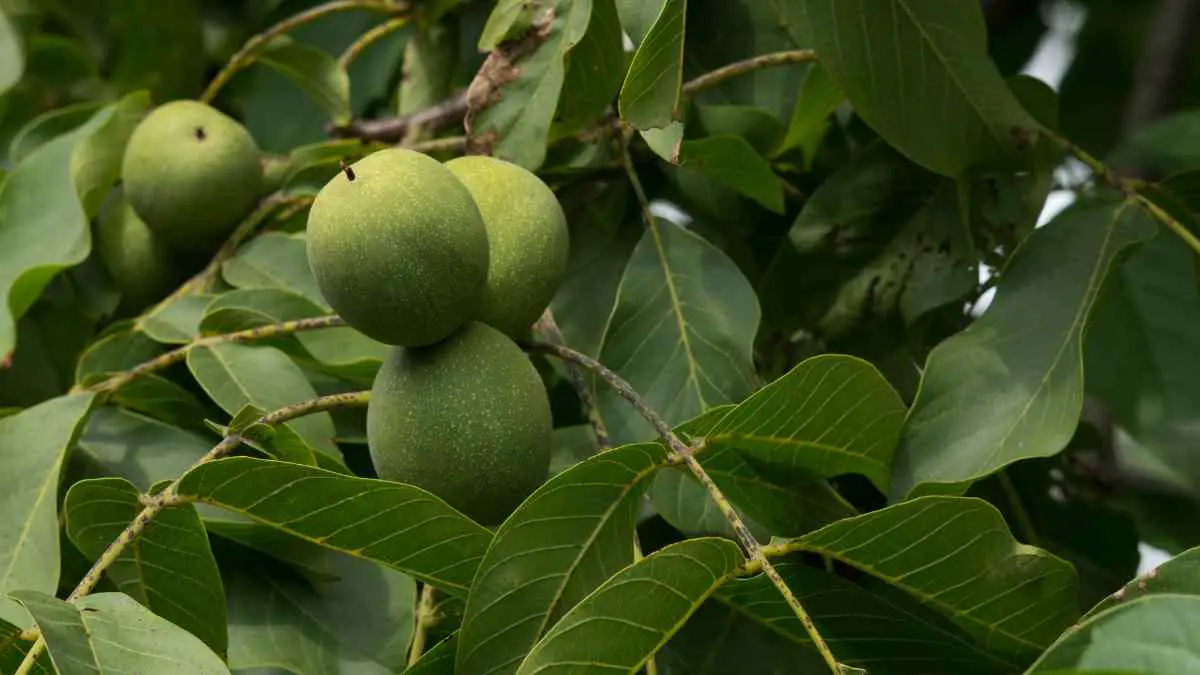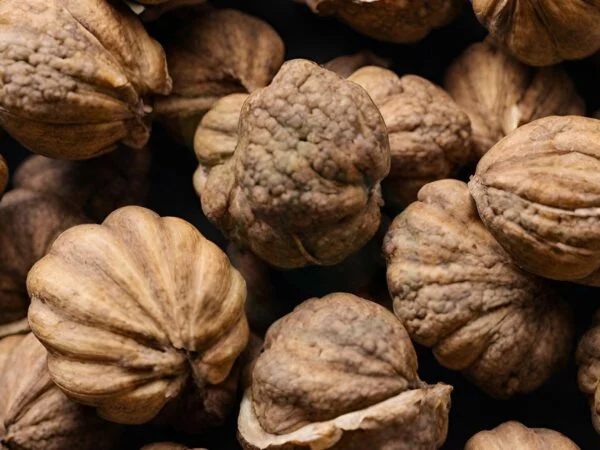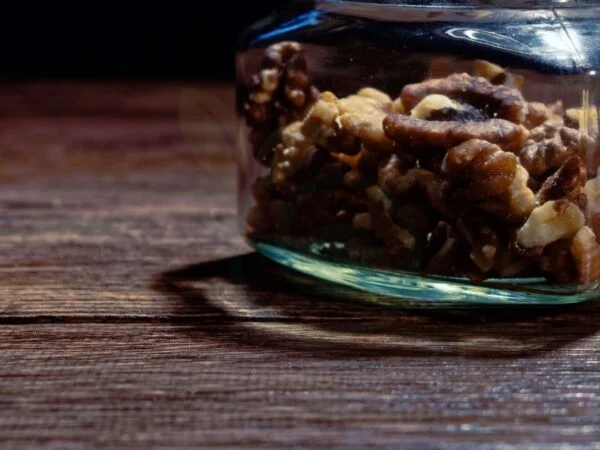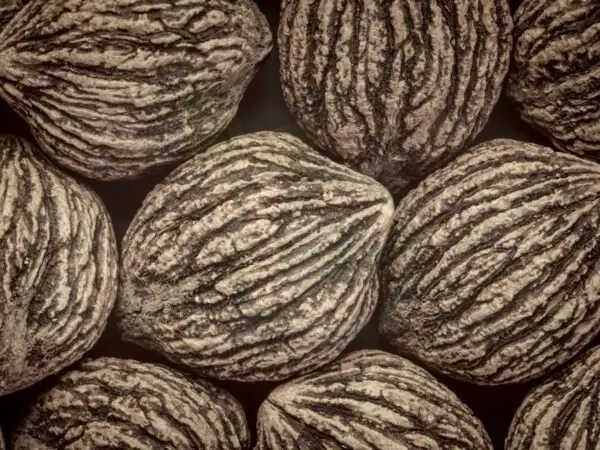Curious about the worth of a black walnut tree? The value lies not only in its majestic beauty but also in its lucrative timber. These trees offer both aesthetic appeal and financial gain to investors and foresters, making them a valuable asset through timber sales.
Black walnut trees are prized by foresters for their high-quality wood, sought after for timber sales, furniture, flooring, and other premium products. Understanding the value of these trees can lead to smart investment decisions and potential profit opportunities. Whether you have one on your property or are considering planting them, knowing the value they hold is essential for maximizing returns.
Key Takeaways
- Identify Black Walnut Trees: Learn to recognize black walnut trees by their distinctive features such as compound leaves and dark, ridged bark.
- Understand Factors Impacting Value: Consider the tree's size, quality, trunk, maturity, loggers, and location when assessing the value of a black walnut tree.
- Calculate Tree Value Wisely: Utilize formulas like the Doyle Scale or the International 1/4-Inch Rule to estimate the value of a black walnut tree accurately in board feet.
- Explore Usage in Various Industries: Discover how black walnut wood is valued in industries like furniture making, flooring, and musical instrument crafting.
- Maximize Earnings by Selling for Timber: Selling black walnut trees for timber can be profitable, especially if the wood is high-quality and in demand.
- Appreciate Environmental Benefits: Recognize the ecological advantages of black walnut trees, such as their role in providing habitat, improving soil health, and sequestering carbon.
Black Walnut Description
Tree Characteristics
Black walnut trees can be identified by their unique leaf shape and distinct bark texture. The age of the tree plays a crucial role in determining its overall value. To assess the tree's potential worth accurately, it is essential to measure the diameter precisely.
Nutritional Value
Black walnut nuts offer nutritional benefits such as high protein content, making them a valuable addition to a balanced diet. Consuming black walnuts provides health advantages due to their rich source of omega-3 fatty acids. The unique taste and culinary versatility of black walnut nuts make them a sought-after ingredient in various dishes.
Wood Properties
The wood properties of black walnut are highly esteemed for their durability and stunning rich color. Woodworkers appreciate the distinct grain pattern and workability of black walnut wood for a wide range of projects. The aesthetic appeal of black walnut wood makes it particularly valuable in furniture making, adding elegance and sophistication to the finished pieces.
Identifying Black Walnut Trees
Leaf Structure
Black walnut trees can be identified by examining their leaf structure, which consists of compound leaves with multiple leaflets. The leaflets have a serrated edge and are arranged alternately along the stem. This unique arrangement helps distinguish black walnut trees from other species.
The compound leaf arrangement of black walnut trees plays a crucial role in identification. The leaflets are elongated and pointed, giving the tree a distinct appearance. Understanding the characteristics of these leaves is essential for accurately recognizing black walnut trees in various settings.
The leaf structure of black walnut trees contributes significantly to their overall value. It aids in easy identification, which is essential for forestry management, timber harvesting, and conservation efforts. The leaves provide valuable insights into the health and growth patterns of these trees.
Bark Texture
The bark texture of black walnut trees is rough and deeply furrowed, creating a unique visual pattern. This distinctive texture evolves as the tree ages, allowing observers to estimate its approximate age based on bark characteristics. The roughness also serves as protection against external elements.
Evaluating the bark texture is crucial for determining the age and health of black walnut trees. Changes in texture can indicate underlying issues such as disease or pest infestations. By closely examining the bark, experts can assess the tree's condition and implement appropriate measures to ensure its well-being.
The rough and deeply furrowed bark texture adds to the overall value of black walnut trees. It enhances their aesthetic appeal and contributes to their resilience against environmental stressors. Moreover, this feature makes black walnut trees desirable for landscaping purposes due to their striking appearance.
Nut Shape
Black walnuts are known for their distinctive round nut shape, making them easily recognizable among other nut varieties. The rounded shape sets them apart in the market and appeals to consumers seeking unique culinary experiences. This characteristic influences consumer preferences and demand trends.
The nut shape of black walnuts directly impacts their market demand and value. Consumers often associate round nuts with quality and freshness, driving up demand for products made from these nuts. As a result, nut shape plays a significant role in determining the pricing and commercial success of black walnuts.
The quality and value of black walnuts are closely linked to their nut shape characteristics. Growers prioritize cultivating nuts with uniform round shapes to meet market expectations and command premium prices for their produce. Nut shape serves as a key indicator of overall nut quality and influences purchasing decisions.
Factors Impacting Value
Tree Age
Assess the age of black walnut trees to estimate their growth rate and potential value. Older trees often produce higher-quality nuts, increasing their overall value. Historical significance also plays a role in determining the value of mature black walnut trees.
Discuss how tree age impacts the quality and quantity of nut production. Mature trees tend to yield larger quantities of high-quality nuts, which are highly sought after in various industries.
Consider the historical significance of older black walnut trees in determining their value. Trees with a long history not only showcase resilience but also possess unique characteristics that can enhance their market value.
Diameter
Measure the diameter of black walnut trees accurately to calculate their volume and value. Larger diameters typically indicate higher wood volume, contributing to increased timber value.
Discuss the correlation between tree diameter and wood quality in black walnut trees. Thicker trunks often result in superior wood quality, which is essential for premium-grade timber products.
Highlight the importance of diameter measurement in estimating timber yield and profitability. Accurate measurements help determine the potential economic returns from harvesting black walnut trees based on their size and volume.
Health Condition
Evaluate the health condition of black walnut trees to determine their overall value. Healthy trees are more valuable due to their better growth rates, higher nut yields, and enhanced wood quality.
Discuss common diseases and pests that affect black walnut trees and their impact on value. Pests like walnut caterpillars or diseases such as thousand cankers disease can significantly reduce a tree's value by compromising its health and productivity.
Emphasize the importance of maintaining tree health for maximizing the economic returns of black walnut cultivation. Regular monitoring, timely treatments, and proper care practices are crucial for preserving tree health and ensuring sustained profitability.
Location Accessibility
Consider the accessibility of the tree location for harvesting and transportation. Easy access to black walnut stands reduces harvesting costs and facilitates efficient transportation to processing facilities or markets.
Discuss how location influences the cost-effectiveness of harvesting black walnut trees. Trees located closer to roads or processing centers are more economically viable due to reduced transportation expenses.
Evaluate the impact of location on market access and potential buyers for black walnut products. Proximity to potential buyers or markets can increase sales opportunities and demand for products derived from harvested black walnuts.
Usage in Various Industries
Furniture Making
Black walnut wood is highly sought after in professional furniture making for its rich color and durability. Its aesthetic appeal adds a touch of elegance to high-end furniture pieces. The market demand for black walnut furniture remains high due to its unique properties.
Nut Production
Calculating the potential nut production of black walnut trees involves considering factors like age and health. Seasonal variations impact nut production, influencing market supply. The economic value of nut production plays a significant role in determining the overall worth of black walnut trees.
Natural Dye
Black walnut husks are utilized as a natural dye in textile industries, offering a sustainable alternative. Extracting and using black walnut dye for fabric coloring involves a specific process. The eco-friendly nature of black walnut dye aligns with the growing trend towards sustainable practices in textiles.
Calculating Tree Value
Using Tree Calculators
Input Measurements
- Determine the necessary input measurements for calculating the board feet of black walnut lumber.
- Accurate measurements are crucial in estimating the value of black walnut trees.
- Precision in input measurements is essential for reliable valuation results.
Market Rates
- Research current market rates for black walnut lumber and nuts to gauge tree value.
- Factors like demand, supply, and economic conditions influence price fluctuations.
- Comparing market rates with historical data helps predict future trends in pricing.
Final Estimation
- Summarize all key factors to arrive at a final estimation of a black walnut tree's value.
- Tree characteristics, wood properties, nut production, and market rates are considered.
- A comprehensive assessment based on gathered data determines the economic worth.
Manual Calculation Methods
Explaining Manual Methods
- Manual methods involve calculating board feet in black walnut lumber accurately.
- Understanding formulae and conversion factors is crucial for manual calculations.
- Step-by-step instructions help determine the board feet of black walnut wood manually.
Selling for Timber
Finding Buyers
To sell black walnut timber, one must explore strategies to connect with potential buyers. Networking and marketing play a crucial role in reaching out to interested parties. Online platforms and industry contacts are essential for expanding the buyer network.
Timber Auctions
Participating in timber auctions can help secure the best prices for black walnut trees. These auctions offer transparency and a competitive environment, ensuring fair market values. However, challenges may arise in navigating the auction process effectively.
Direct Sales to Mills
Directly selling black walnut logs to sawmills is a convenient option for many tree owners. This approach offers efficiency and streamlines the sales process. Negotiating with mills involves considering factors like log quality, quantity, and current market prices.
Worth of Timber Acreage
Per Acre Valuation
Black walnut tree plantations hold significant value per acre, depending on various factors. Calculating the per acre valuation involves assessing tree density and land quality. The valuation is crucial for making informed investment decisions in black walnut cultivation.
Factors influencing the land value include soil fertility, proximity to markets, and overall plantation health. Higher tree density can increase the per acre valuation, leading to potentially higher returns on investment. Accurate valuation ensures optimal utilization of resources and maximizes profitability in the long run.
Harvesting Costs
Estimating the harvesting costs associated with extracting black walnut trees is essential for financial planning. Labor, equipment, and transportation expenses contribute to the overall cost of harvesting operations. Implementing cost-saving strategies and enhancing efficiency are vital in reducing overall harvesting costs.
Efficient management practices, such as proper scheduling of operations and utilizing advanced equipment, can help streamline the harvesting process. By optimizing resource allocation and minimizing wastage, harvesting costs can be effectively controlled, enhancing the profitability of black walnut cultivation.
Profit Margins
Calculating the potential profit margins from selling black walnut lumber and nuts requires a comprehensive analysis of production costs and market dynamics. Factors like raw material expenses, processing costs, and prevailing market prices directly impact profit margins. Maximizing profits necessitates strategic planning and effective cost management strategies.
To enhance profit margins, producers can focus on improving operational efficiency, exploring new marketing channels, and adapting to market trends. By aligning production processes with consumer demands and industry standards, profit margins can be optimized to ensure sustainable business growth.
Environmental Benefits
Carbon Sequestration
Black walnut trees play a crucial role in carbon sequestration by absorbing carbon dioxide from the atmosphere. They store carbon in their trunks, branches, and roots, helping mitigate climate change. Black walnut forests have a significant carbon storage capacity, contributing to reducing greenhouse gas levels.
Preserving black walnut trees is essential for their contribution to carbon offsetting efforts. By maintaining these trees, we can enhance the environmental balance and ensure a healthier planet for future generations. The conservation of black walnut forests is vital for sustaining a stable climate and combating global warming.
Biodiversity Support
Black walnut trees are key players in supporting biodiversity due to their ecological significance. These trees provide habitat for various plant and animal species, fostering a diverse ecosystem. Black walnut forests act as sanctuaries for wildlife, promoting species diversity and ecosystem resilience.
The conservation value of black walnut trees lies in their ability to maintain ecosystem health. By preserving these trees, we protect the intricate web of life they support, ensuring the continued existence of numerous species. Black walnut forests are crucial for preserving biodiversity and safeguarding our natural heritage.
Final Remarks
In understanding the value of black walnut trees, you've learned about their unique characteristics, factors influencing their worth, and the various industries benefiting from their usage. Calculating the value of these trees and selling them for timber can be lucrative endeavors, considering not just the financial aspects but also the environmental advantages they offer. By recognizing the worth of timber acreage and appreciating the ecological benefits, you can make informed decisions regarding these valuable resources.
As you delve into the world of black walnut trees, consider exploring further how you can maximize their value sustainably. Whether it's through responsible harvesting practices, utilizing them in innovative ways, or simply appreciating their role in our ecosystems, your actions can contribute to both economic prosperity and environmental well-being.
Frequently Asked Questions
What are the characteristics of Black Walnut trees?
Black Walnut trees are known for their dark, rich wood with a unique grain pattern. They have compound leaves with 15-23 leaflets and produce round, green fruits that contain edible nuts inside hard shells.
How can I identify a Black Walnut tree?
Identify Black Walnut trees by looking for compound leaves with serrated edges, rough bark with deep furrows, and round green fruits that drop in the fall. The inner nut shell is hard and difficult to crack.
What factors impact the value of a Black Walnut tree?
The age, size, quality of the wood, location, market demand, and overall health of the tree influence its value. Trees in good condition with straight trunks and high-quality wood fetch higher prices.
In which industries are Black Walnut trees commonly used?
Black Walnut wood is prized in furniture making, cabinetry, flooring, gunstocks, and musical instruments due to its durability and attractive appearance. The nuts are also used in cooking and baking for their rich flavor.
How is the value of a Black Walnut tree calculated?
Tree value is determined based on factors like diameter at breast height (DBH), height, quality of wood, estimated board feet yield, market prices for lumber products, and any additional costs incurred in harvesting or processing. Consulting a forestry expert is advisable for accurate valuation.
Image Source: Paid image from CANVA





